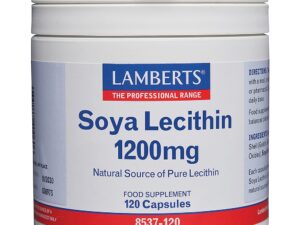Description
The Vibrant World of Food Colors: Understanding Tartrazine, Allura Red, and Beyond
From the bright yellow of your favorite soft drink to the tempting red of a juicy candy, colors play a vital role in shaping our perception and enjoyment of food. But behind these vibrant hues often lie artificial food colorings like Tartrazine and Allura Red, sparking discussions about their safety, impact on health, and wider presence in our diet. This article delves into the world of these color additives, exploring their purpose, regulation, and potential concerns.
Why Use Artificial Food Colors?
The primary function of food colors is to enhance visual appeal. Food processing can often strip away natural colors, or the product itself might naturally lack vibrancy. Adding artificial colors aims to:
- Make food more visually appealing: Bright, attractive colors can make food more enticing, especially for children.
- Compensate for color loss: Processing, storage, and transportation can degrade a food’s natural color.
- Standardize color: Ensure consistency in product appearance across different batches and seasons.
- Enhance naturally occurring colors: Make existing colors appear richer and more intense.
Tartrazine (E102) – The Yellow Controversy:
Tartrazine is a synthetic yellow azo dye widely used in a variety of food and beverage products, including:
- Soft drinks
- Candy
- Cereals
- Baked goods
- Processed snacks
While generally considered safe by regulatory bodies like the FDA (Food and Drug Administration) and the EFSA (European Food Safety Authority) at specified levels, Tartrazine has been linked to potential adverse effects, most notably:
- Allergic reactions: Some individuals, particularly those with aspirin sensitivity, may experience allergic reactions ranging from mild skin rashes (urticaria) to more severe respiratory problems.
- Hyperactivity in children: Numerous studies have explored a potential link between artificial food colors, including Tartrazine, and hyperactivity in children. While the evidence remains debated, some research suggests a correlation, particularly in already susceptible individuals.
Allura Red (E129/Red 40) – The Common Red Dye:
Allura Red is another synthetic azo dye used extensively as a red food coloring. It finds its way into a wide range of products, encompassing:
- Candy
- Soft drinks
- Dairy products
- Snack foods
- Cosmetics
Similar to Tartrazine, Allura Red is generally considered safe within regulatory limits. However, similar concerns have been raised:
- Allergic reactions: While less common than with Tartrazine, some individuals may experience allergic reactions to Allura Red.
- Hyperactivity in children: The same concerns regarding a potential link to hyperactivity in children apply to Allura Red, and this remains a topic of ongoing research and debate.
Regulation and Labeling:
Recognizing potential concerns, regulatory bodies worldwide have implemented measures to ensure the safe use of artificial food colors. This includes:
- Setting acceptable daily intake (ADI) levels: These limits define the amount of a particular food color that can be consumed safely on a daily basis over a long period.
- Requiring clear labeling: Products containing artificial food colors are often required to list them on the ingredient label. In some regions, specific warnings may be required if the color is associated with potential adverse effects. For example, the EU requires a warning label for foods containing certain azo dyes, stating that they “may have an adverse effect on activity and attention in children.”
The Search for Natural Alternatives:
Driven by consumer concerns and increased awareness, the food industry is actively exploring natural alternatives to synthetic food colors. These include pigments derived from:
- Beetroot (Betanin): Provides a red color.
- Turmeric (Curcumin): Offers a yellow hue.
- Annatto (Noribixin/Bixin): Provides a yellow to orange color.
- Spirulina (Phycocyanin): Delivers a blue-green color.
While natural colors are perceived as safer, they often come with challenges. They may be less stable, more expensive, and have a shorter shelf life compared to their synthetic counterparts. Achieving the same intensity and vibrancy can also be difficult.
In Conclusion:
Artificial food colors like Tartrazine and Allura Red play a significant role in the visual appeal of our food. While they are generally considered safe within regulated limits, potential concerns regarding allergic reactions and hyperactivity, particularly in children, warrant attention. Understanding the purpose, regulation, and potential risks associated with these additives empowers consumers to make informed choices about their diet. The ongoing shift towards natural alternatives reflects a growing demand for healthier and more transparent food products. Continued research and responsible regulation are crucial in ensuring the safety and well-being of consumers in this vibrant, color-filled world of food.

















Reviews
There are no reviews yet.